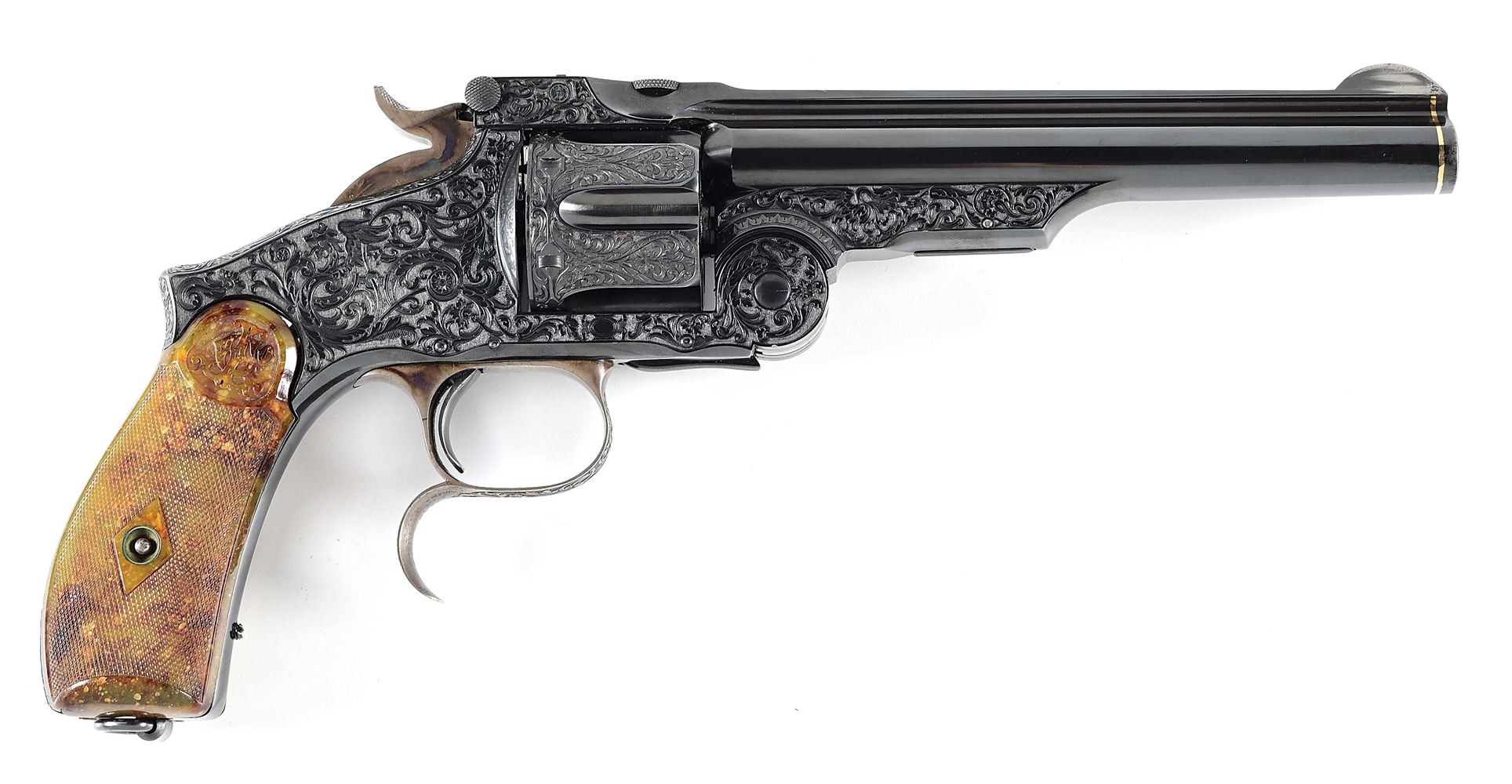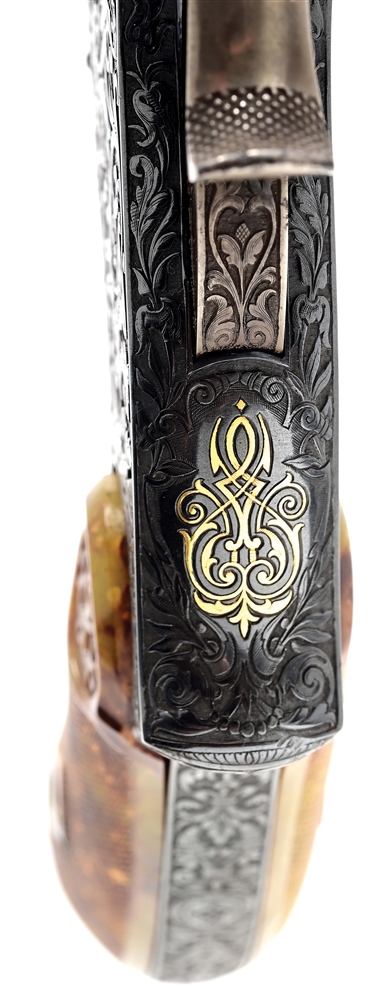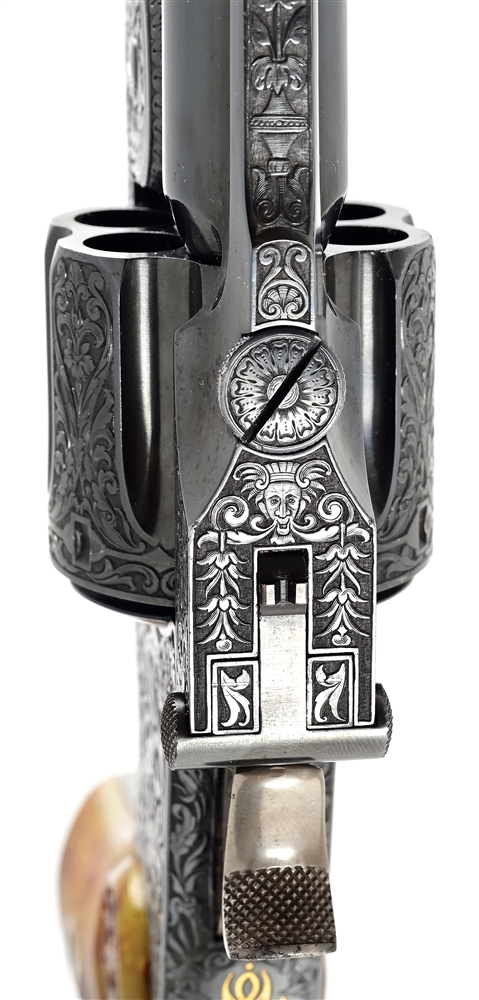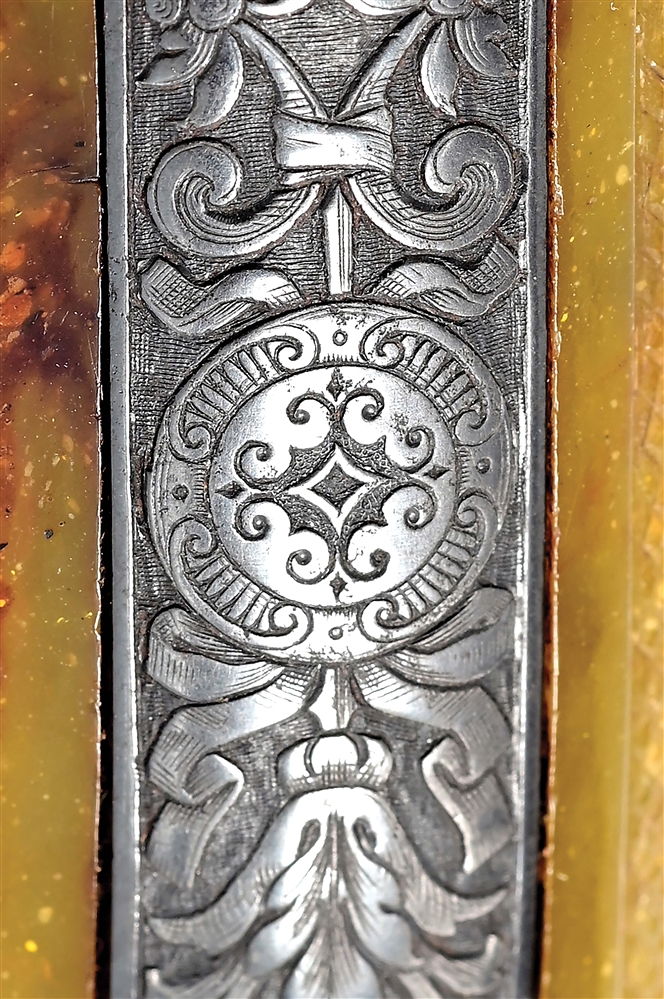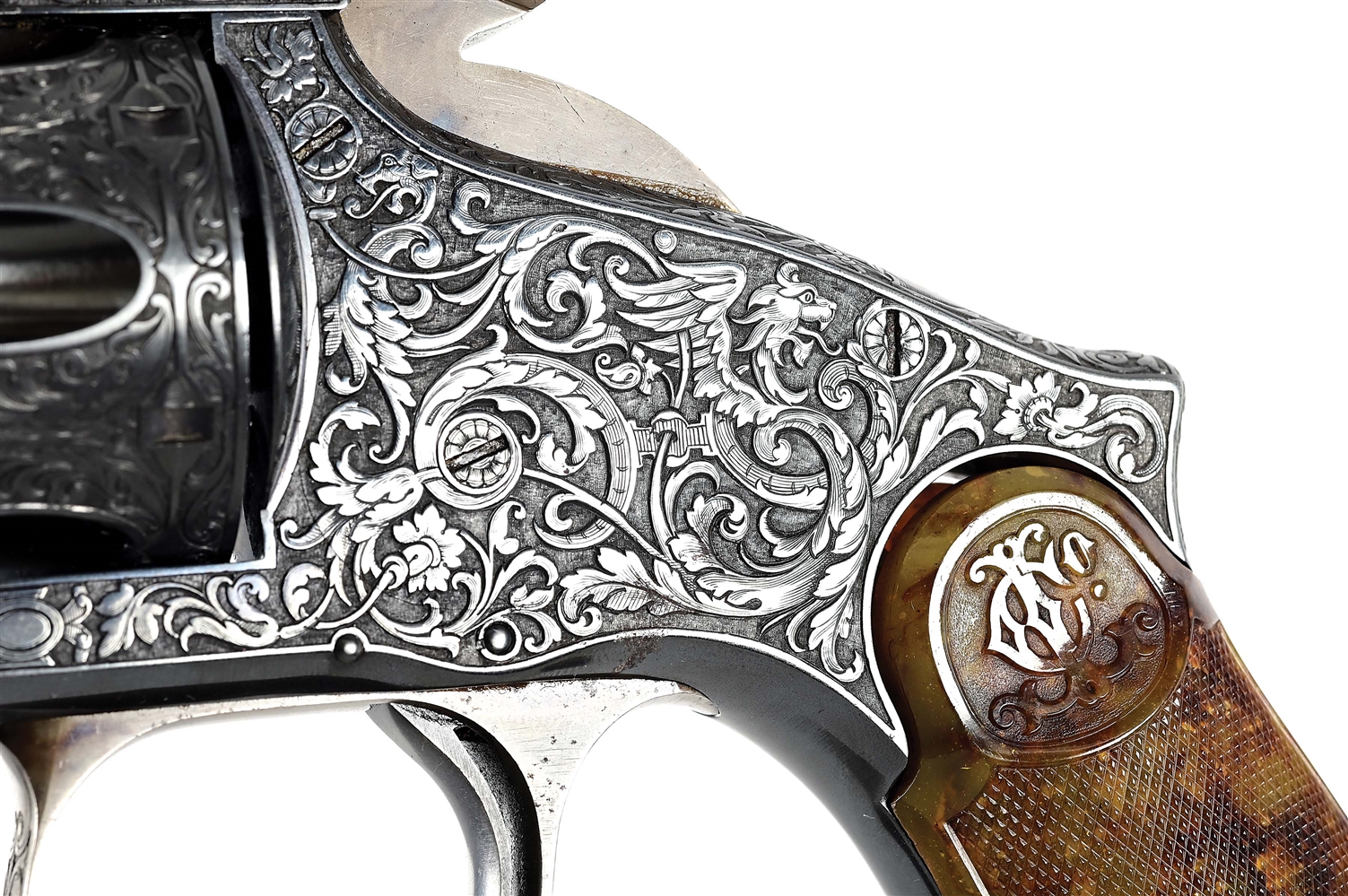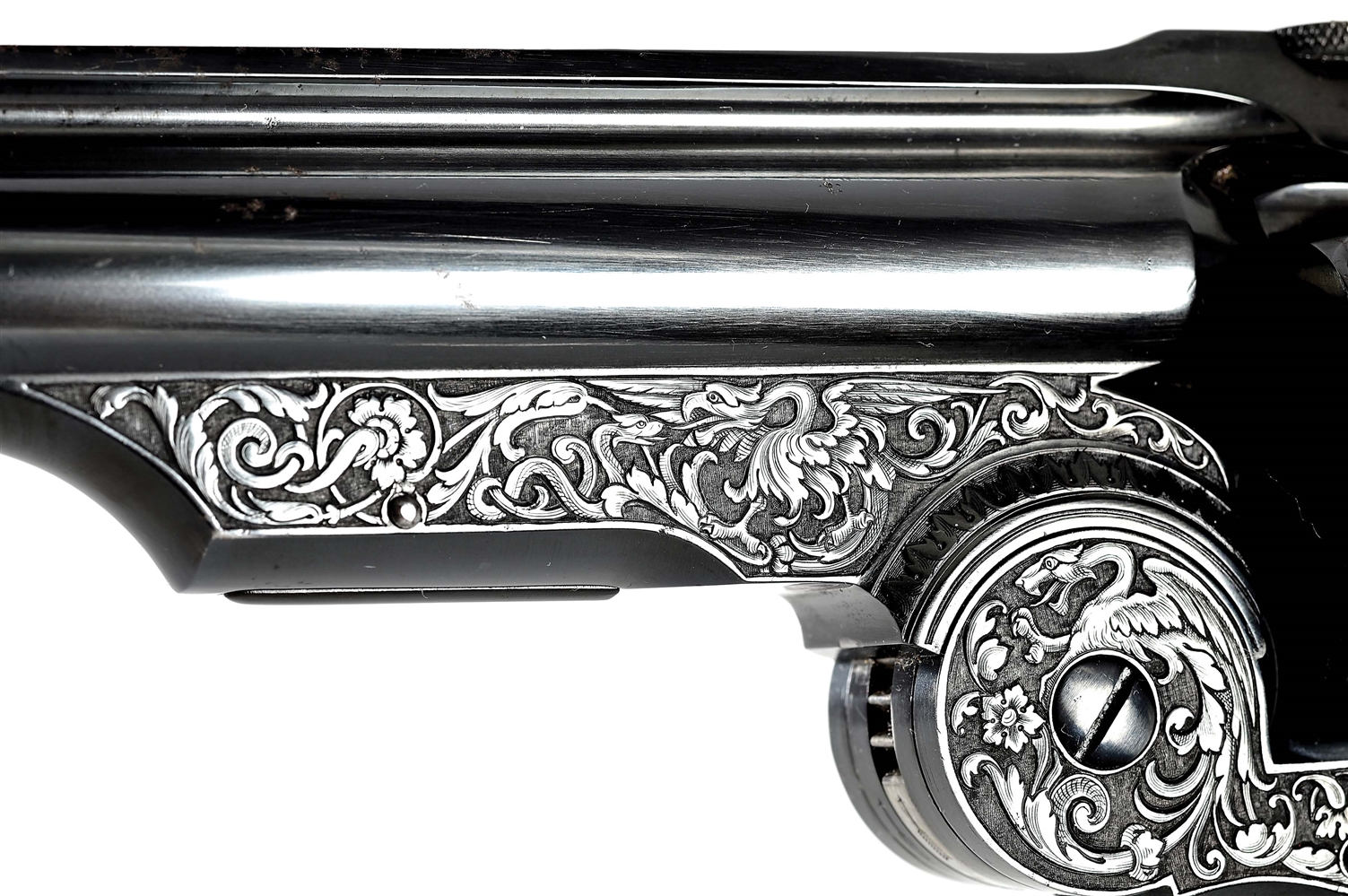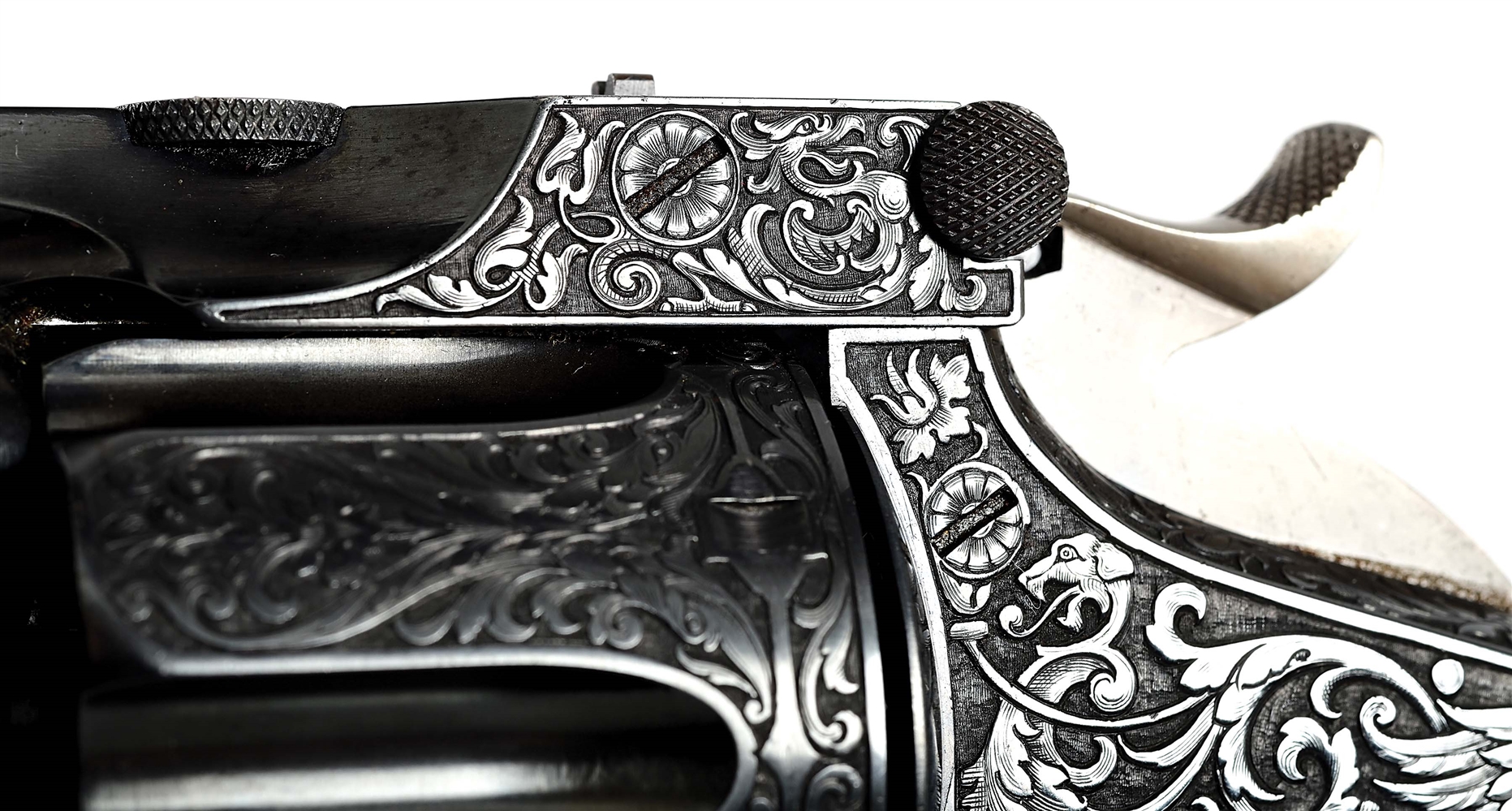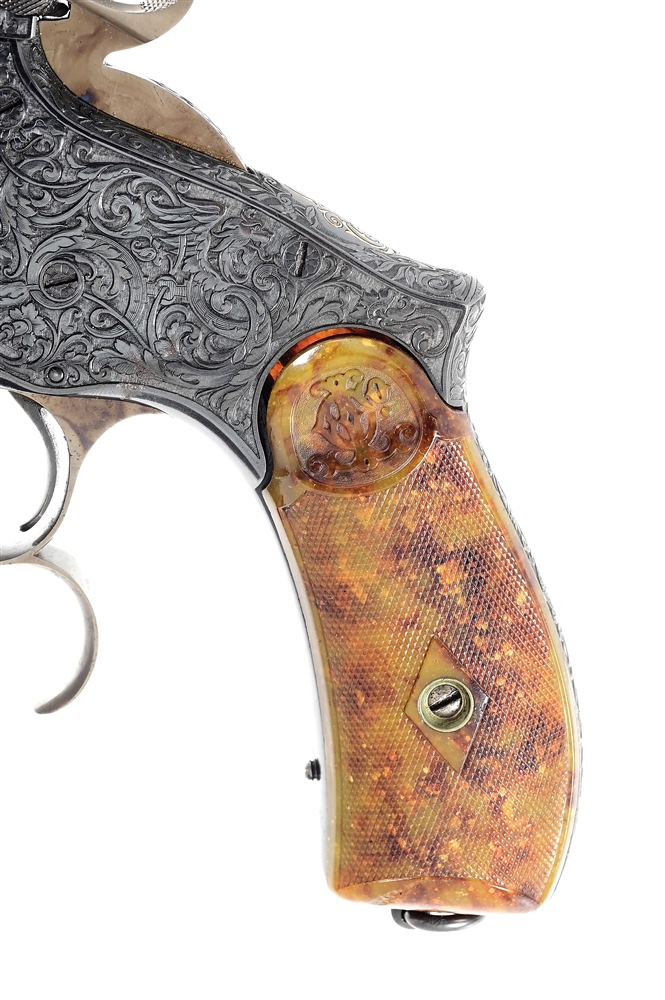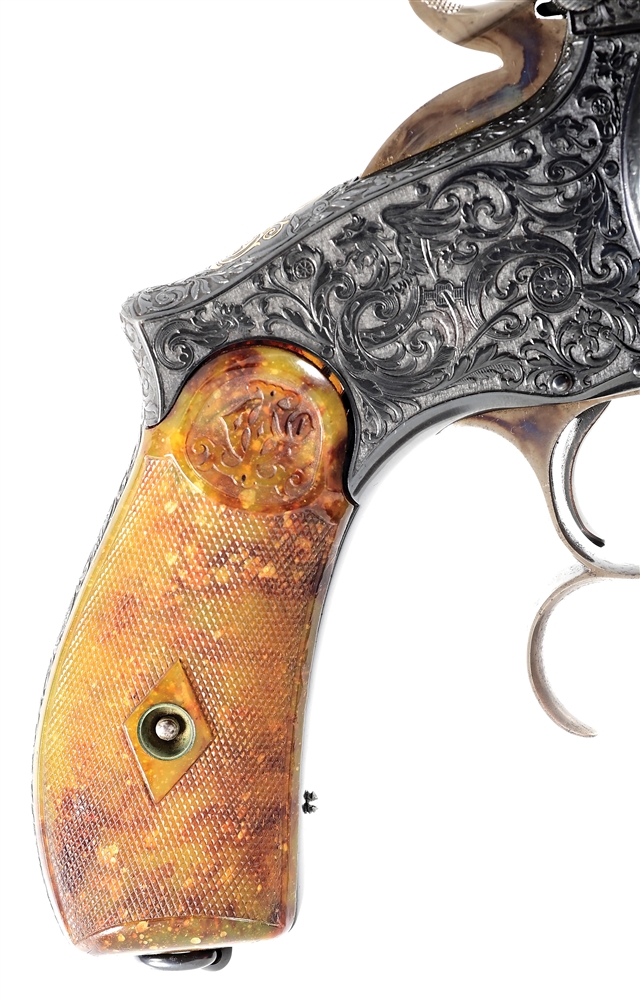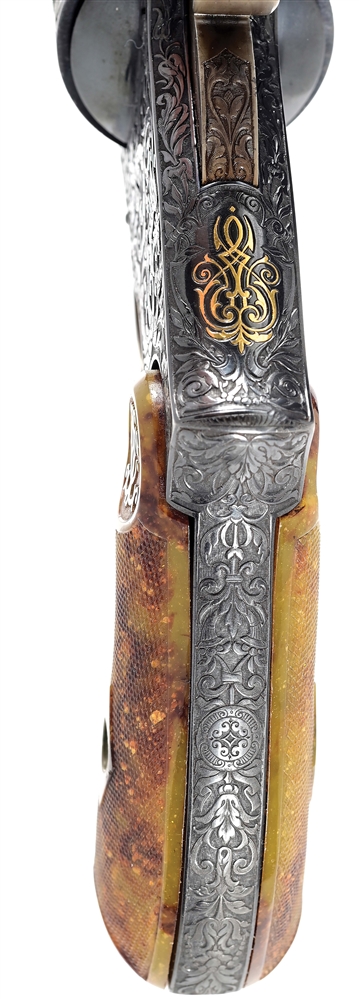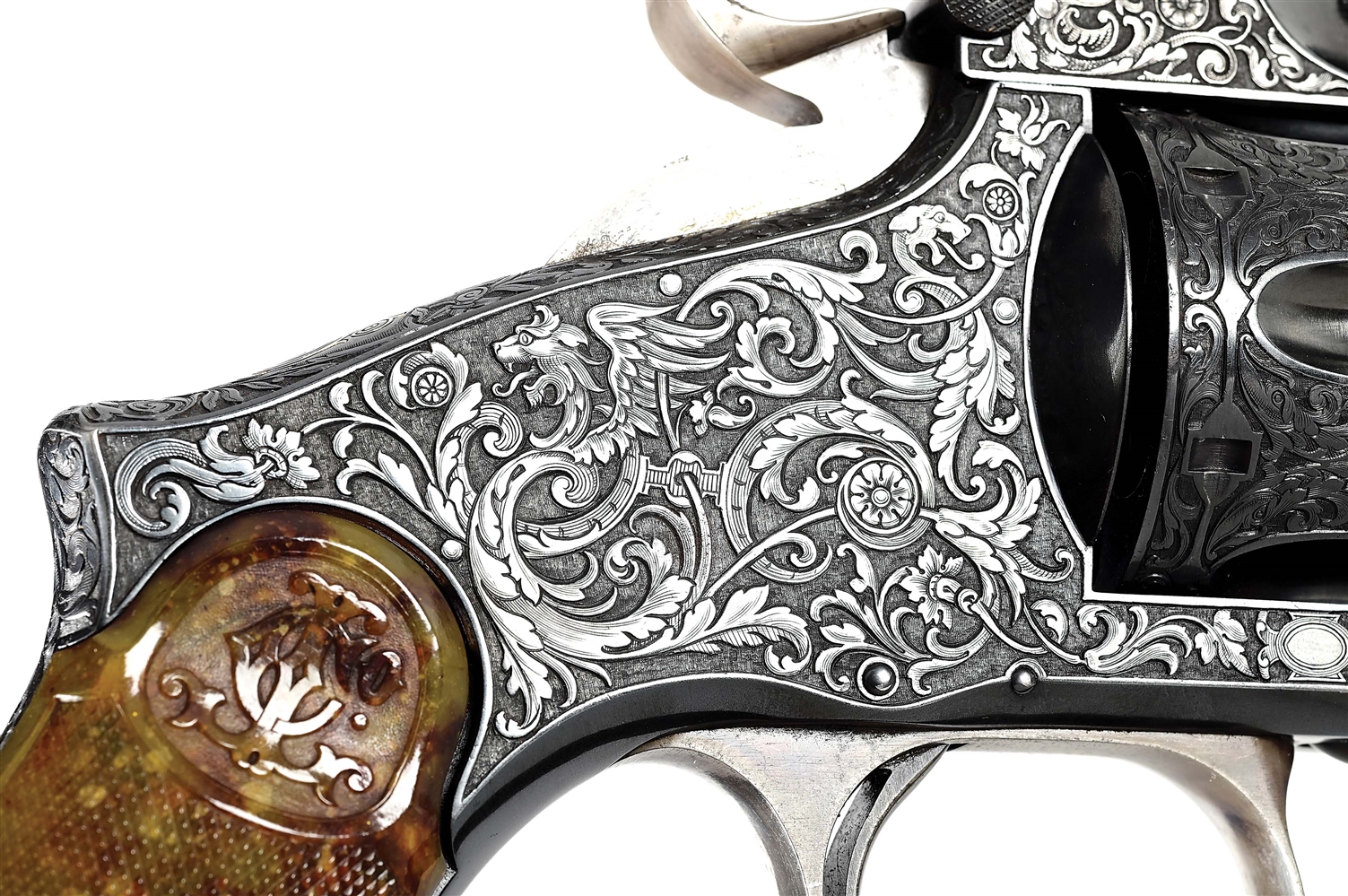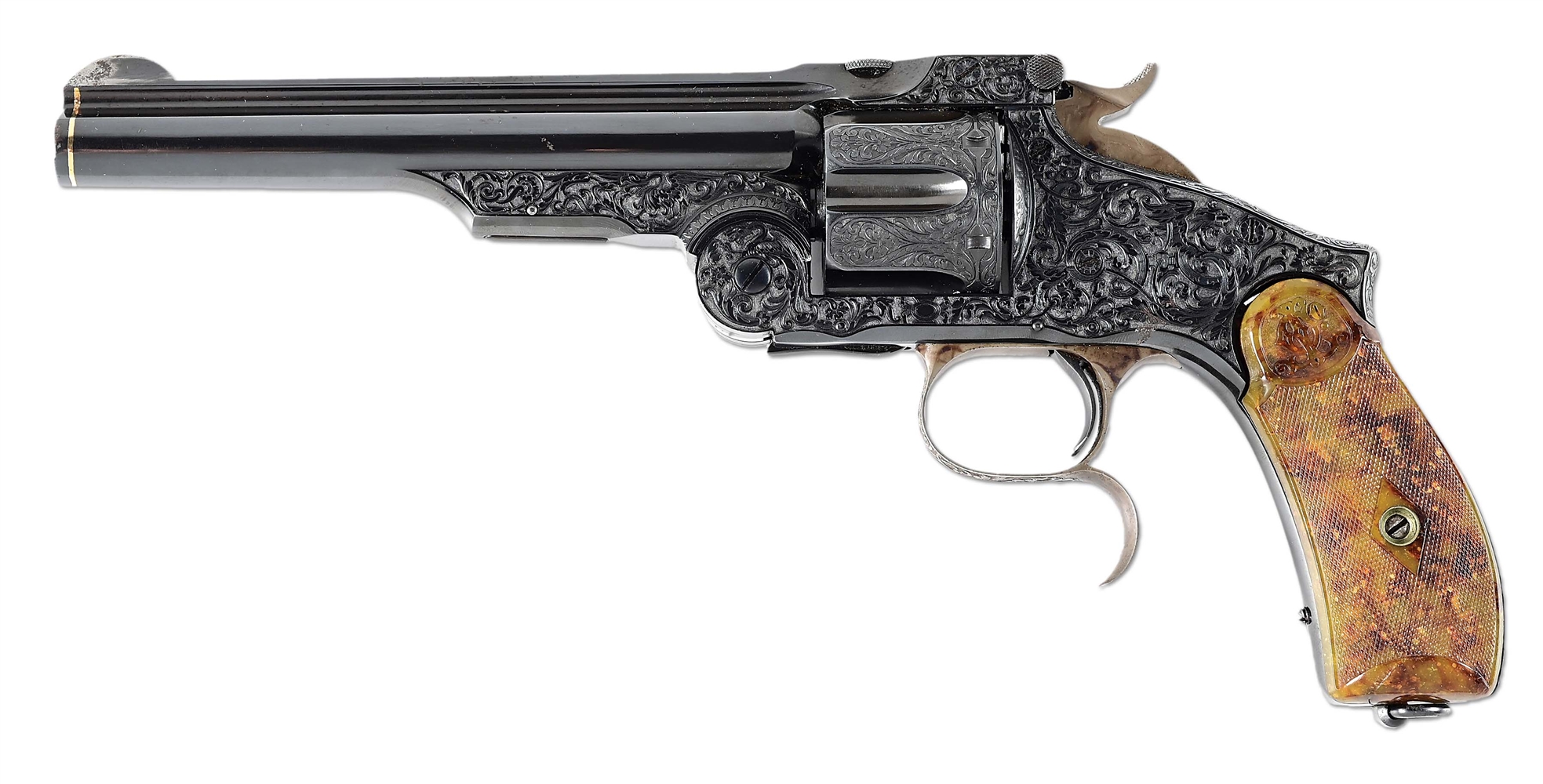
Ludwig Loewe Copy of S&W
LUDWIG LOEWE PRESENTATION COPY OF A S&W NO. 3 REVOLVER, WITH AN ENGRAVING PATTERN NEARLY IDENTICAL TO ANOTHER IN THE HERMITAGE MUSEUM AND A THIRD FROM THE ESTATE OF PRINCE ALEXANDER I OF BULGARIA
When General Alexander Gorloff, the Russian military attache, was shown the No. 3 revolver by Smith & Wesson in an attempt to elicit a contract, he was interested but requested several changes, including a rechambering to a different bullet (Gorloff, rightfully, had concerns that the heeled lubricated bullet would be extremely dirty and detrimental to the bore), which became the .44 Russian. When Grand Duke Alexandrovich visited the factory in 1871 to review the progress on the contract, S&W courted him with a pearl gripped engraved Russian Model, which he reputedly toted throughout his U.S. trip, even taking it on a buffalo hunt with Buffalo Bill himself. Alexandrovich is supposed to even have used the gun to take a buffalo during the hunt. However, several factors, including S&W selling copies of the revolver to Turkey and Japan and the cost to move them across the world, led to Russia enticing European companies to manufacture a copy for them. Ludwig Loewe manufactured guns as a copy of the 3rd Model Russian with integral blade front sight, blued frame barrel assembly and cylinder, case colored trigger guard and hammer. Non-rotatable lanyard loop. "11" observed on frame under grips; grips with "11" inscribed on interior. Top rib has "LUD. LOEWE & Co BERLIN" in gold. This example has ornate engraving on a striated ground, which covers the frame, lower lug of barrel assembly, rib, rear of hammer, trigger guard, and top-break junction; subjects include floral scroll, urns, mythical animals (gryphon?), florals, ornaments, and a gold wire design on knuckle. Gold wire design does not correspond to any designs this cataloguer has been able to find. Gold band at muzzle. Tortoiseshell [RUSSIAN EMBER?]grips with checkered panels, Ludwig logo monogram at top, slightly shrunk. Examples with engraving patterns that are nearly identical can be seen in the Hermitage Museum, inventory 3.O.-6868, also published in "Antique European and American Firearms At The Hermitage Museum" by Tarassuk, 1972, plate 495; Joh. Springer's Erben auction, November 7th, 2019, Lot 210, with provenance from Prince Alexander I of Bulgaria. PROVENANCE: Family lore states that revolver was purchased from a German antiques dealer shortly after the conclusion of World War II. CONDITION: Overall excellent, retaining virtually all of the blue with a few minor splotches of age related oxidation, one on each side of frame and a small area of barrel; slightly larger area of left side of blade front sight. Front sight was cleaned of corrosion in the past and has visible areas of polishing and loss on left side. Engraving is crisp and absolutely gorgeous throughout. Tortoiseshell grips have shrunk and expose inner mechanism to some extent; free of cracks or chips. Bore is excellent, with crisp sharp rifling, breech is exceptionally clean. This gun is absolutely gorgeous and worthy of being in either a top quality gun collection or a collection of the finest art. EMW

